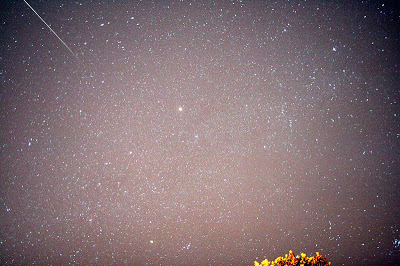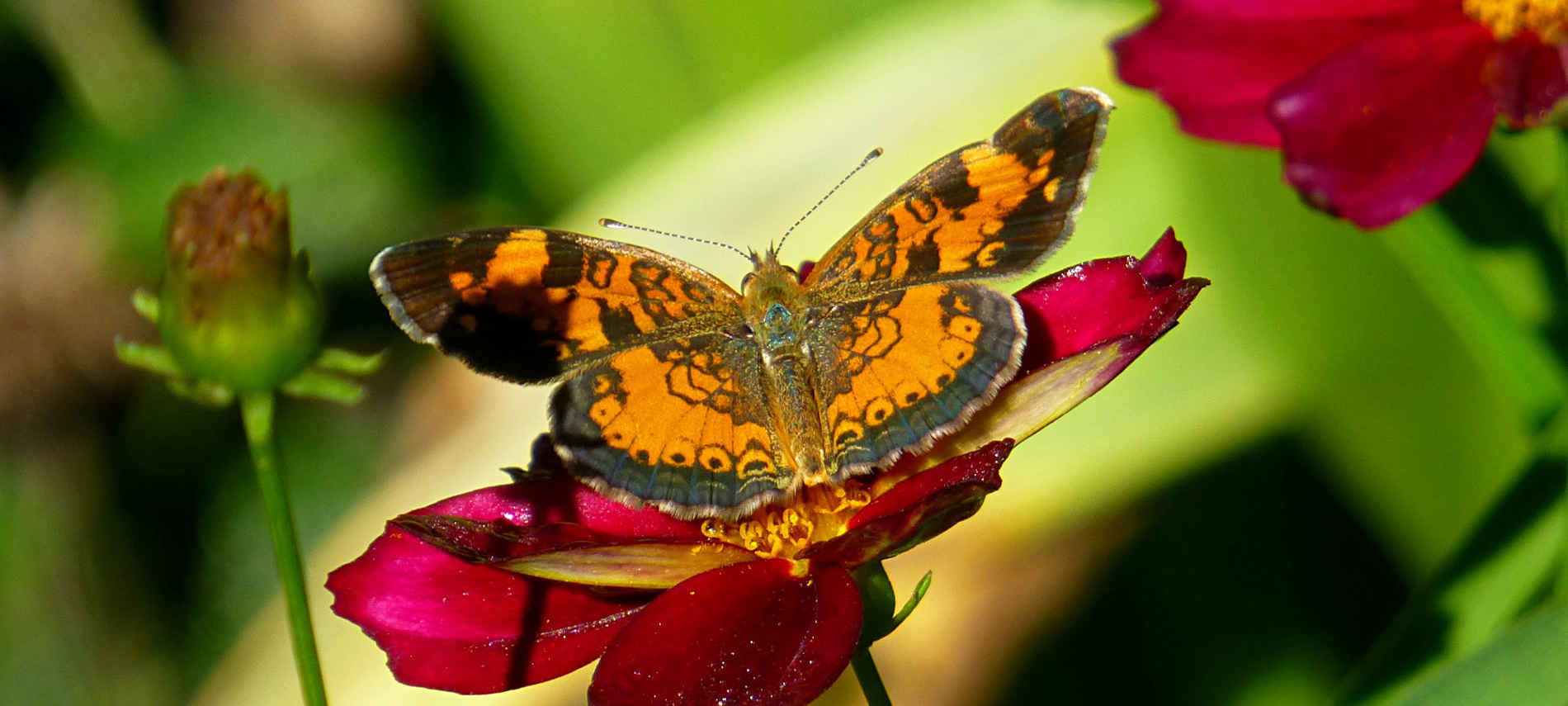Mother Nature serves us up a good helping of dark night sky in Pisgah National Forest, thanks to zero street lights on our road and our location two miles within Pisgah National Forest, between two ridgelines that block a lot of the small town night lighting around us. So we like to provide a little calendar each year of what stargazing guests at the Inn on Mill Creek might see, other than the Milky Way (which, by the way, is awesome on a dark clear night flowing across the sky from the Lake House to the Main House).
Below are some of the more common celestial events going on this year. {For the first half of the year, we bring you more details for each event, linked to a great reference site for stargazers, http://earthsky.org.}
 |
| The Geminids Meteor Shower…don’t miss it in December! [Photo Credit: Wikipedia] |
Late February: All five visible planets in the sky. Mercury, Venus, Mars, Jupiter and Saturn, all visible to the naked eye, will be present in the sky in late February, at different times in the evening.
March 14: Venus and Jupiter at conjunction. Venus and Jupiter will be hanging together in the western sky, just three degrees apart, after sunset. You’ll actually be able to see them in conjunction (meaning really close together) throughout mid-March, so if March 14 ends up being a cloudy night, look up on the evenings thereafter. And check the sky on March 25 for the crescent moon to be part of the show.
April 21-22: Lyrids Meteor Shower. Good news…no moon this year during the Lyrids means you may see up to 20 meteors per hour at peak time, after midnight and before dawn.
May 4-6: Eta Aquarids Meteor Shower. This meteor shower always takes place on Brigette’s birthday, so even though it’s typically one of the lesser shooting star shows — and this year will likely be outshown by the largest full moon of 2012 — it’s still special to us. Look east to the constellation Aquarius after midnight.
May 20: Partial Solar Eclipse. We’ll be treated to a partial solar eclipse in our hemisphere on the afternoon of May 20.
June 4: Partial Lunar Eclipse. Just before the sun comes up on June 4, we’ll see a partial lunar eclipse as Earth gets between the sun and the moon.
July 28-29: Southern Delta Aquarids Meteor Shower. If the skies are clear to the east after midnight, look up and you could possibly see up to 20 meteors per hour at the peak of this meteor shower.
August 12-13: Perseids Meteor Shower. After midnight, look to the constellation Perseus in the northeast for this fantastic meteor shower, which can produce up to 60 meteors per hour during the peak dates in August.
October 21-22: Orionids Meteor Shower. Best viewing for the Orionids is the eastern sky after midnight. This meteor shower does not produce as big a show as the Perseids, but the sky will be dark, and if it’s clear, you may catch some shooting stars.
November 17-18: Leonids Meteor Shower. The Leonids can produce 40 meteors per hour after midnight at their peak dates in November, streaming from the constellation Leo. Every 33 years, the peak brings hundreds of meteors each hour, but the most recent year for that was 2001, so we have several years until the next really big show.
December 13-14: Geminids Meteor Shower. Don’t let December’s brisk evening temperatures keep you from heading outdoors to catch this stellar meteor shower coming from the constellation Gemini in the eastern sky. You might see upwards of a hundred shooting stars each hour after midnight under optimal conditions. And there’s no moon this year during the peak, so skies will be dark.
Finally, how can we close this post without mentioning the ISS — International Space Station — crossing over the Inn at different hours during different days each month, sometimes at night where it is clearly visible, a non-blinking bright white light moving slowly and steadily across the night sky. The ISS will be headed over us pre-sunrise on January 31, around 6:45am, and just before 6am on February 1. After that, the next nighttime viewing will be at 7:43pm on February 9. You can track the ISS going over your house at https://spotthestation.nasa.gov/sightings/.

